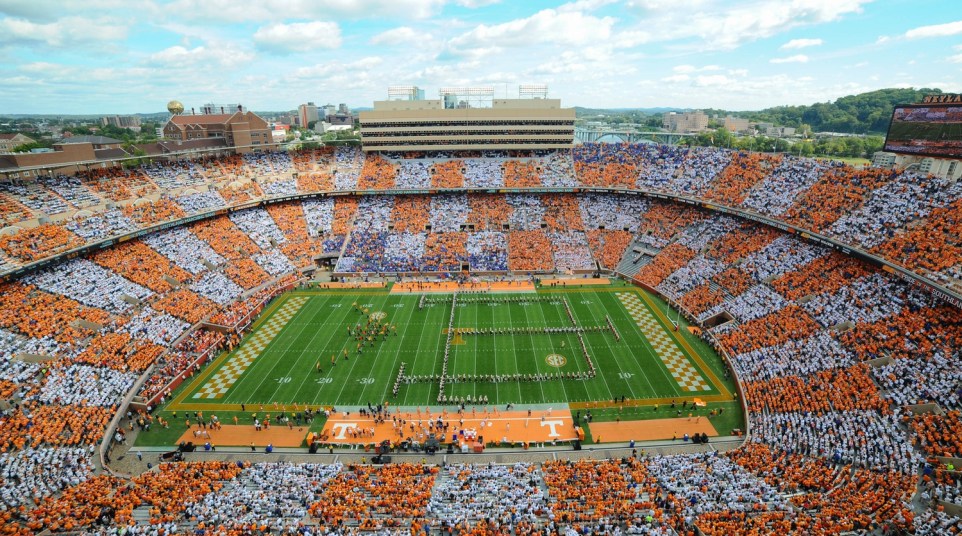A history lesson behind the SEC East's stadiums
College stadiums aren’t just places to go watch a game. In the SEC, they’re much more than that, shrines built to some of the greatest programs in the country.
Read up on the history behind all seven SEC East stadiums, home to some of the biggest, and most significant stadiums in all of college football:
Florida — Ben Hill Griffin Stadium
Date opened: 1930
Namesake: Originally called Florida Field, the stadium was renamed for citrus magnate and big-time Florida booster Ben Hill Griffin Jr. in 1989.
Major expansions: 1950, 1960, 1966, 1982, 1991, 2003, 2008
Interesting facts: Nicknamed “The Swamp” by Steve Spurrier in the early 1990s; original capacity was less than 22,000 (now more than 88,000); second-largest sports facility in Florida behind only Daytona International Speedway
Georgia — Sanford Stadium
Date opened: 1929
Namesake: Named for Dr. Vincent Steadman Sanford, who began his career at Georgia as an English professor and eventually became university president.
Major expansions: 1949, 1964, 1967, 1981, 1991, 1994, 2000, 2003
Interesting facts: Original cost was just $360,000, equivalent to less than $5 million today; games played at Sanford are played “Between the Hedges,” in reference to privet hedges that have ringed the field since its original construction; hedges were removed and replaced in 1996
Kentucky — Commonwealth Stadium
Date opened: 1973
Namesake: Named for the Commonwealth of Kentucky, one of just four states in the U.S. referred to as a commonwealth.
Major expansions: 1999
Interesting facts: The current $110-million renovation the stadium is undergoing will actually reduce the seating capacity by about 1,000 seats; fireworks are shot off from the suites added in 1999 after every Wildcats touchdown; natural grass was installed in 2005
Missouri — Faurot Field at Memorial Stadium
Date opened: 1926
Namesake: The “Memorial” portion is in memory of Missouri students and alumni who lost their lives in World War I; the playing surface was named for long-time Mizzou coach Don Faurot in 1972.
Major expansions: 1950, 1960, 1971, 1978, 1996, 2003, 2009, 2014
Interesting facts: The signature rock “M” at the stadium was built by freshmen students in 1927, using leftover rock from the stadium’s construction; the most recent expansion, at $72 million, cost nearly $60 million more than the stadium’s original construction costs in today’s dollars
South Carolina — Williams-Brice Stadium
Date opened: 1934
Namesake: Originally called Columbia Municipal Stadium, then became Carolina Stadium when deeded to USC in 1941. In 1972, the stadium was renamed for Martha Williams-Brice, who donated $2.7 million to the university when she passed away.
Major expansions: 1949, 1957, 1972, 1982, 1997
Interesting facts: One of just two stadiums in the NCAA named solely for a woman; added a 36′ x 124′ video board in 2012, the third-largest in the SEC
Tennessee — Neyland Stadium
Date opened: 1921
Namesake: Originally named Shields-Watkins Field in honor of UT donor Colonel W.S. Shields and his wife. The stadium was renamed in 1962 for General Robert Neyland, the legendary Tennessee coach and athletic director.
Major expansions: 1926, 1929, 1937-1938, 1948, 1962, 1966, 1968, 1972, 1976, 1980, 1987, 1990, 1996
Interesting facts: Construction costs in 1921 were equivalent to about $500,000 in today’s dollars; Neyland is the fifth-largest stadium in the NCAA, second-largest in the SEC and eight-largest in the world
Vanderbilt — Vanderbilt Stadium
Date opened: 1922
Namesake: Originally called Dudley Field when built in 1922 after William Dudley, long-time dean of Vanderbilt’s medical school; renamed for original benefactor “Commodore” Cornelius Vanderbilt when most of the stadium was demolished and rebuilt in 1980-81.
Major expansions: 1949, 1960, 1980, 2003, 2009, 2012
Interesting facts: Smallest stadium in the SEC; home to the Tennessee Oilers (now Titans) in 1998; lights were installed in 1954 in order to host evangelist Billy Graham

